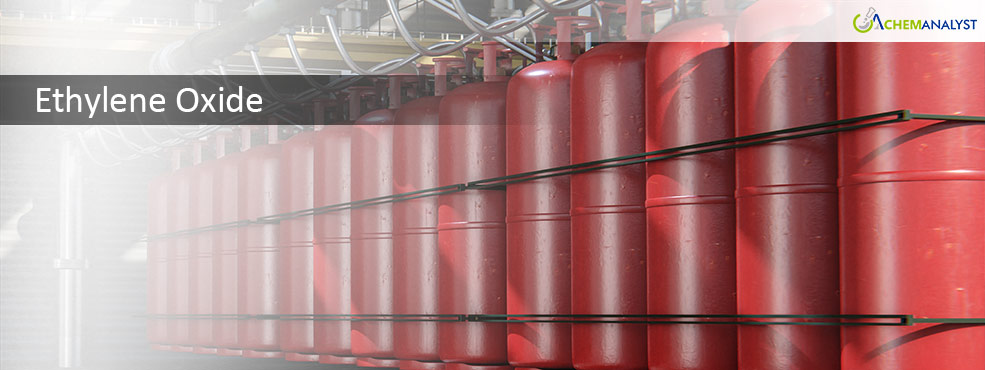Welcome To ChemAnalyst

The first half of July experienced contrasting trends in the ethylene oxide markets of the USA and Germany. U.S. ethylene oxide prices stabilized due to stable production, good inventory levels, and balanced export demand from major derivative applications such as MEG and PTMEG. Producers held prices steady given the cautious global buying behaviour and were also receiving questions about reasonable pricing. In contrast, Germany experienced price movements higher due to increases in feedstock ethylene and severe disruptions to logistics, including port congestion and rail closures. So even with the disruptions to the supply chain, domestic demand remained strong for ethylene oxide, primarily for PTMEG and glycol ethers. The U.S. ethylene oxide market remains neutral, while Germany is likely to remain uncertain due to infrastructure barriers.
Throughout the first half of July, ethylene oxide (EO) markets in the USA and Germany took divergent paths based on regional factors such as feedstock costs, logistical issues, and downstream demand.
In the USA, ethylene oxide prices did not change for the week ending July 4, as the market settled a week prior. As notional upstream ethylene and energy markets continued to experience movement, domestic production remained on target, without major interruptions. Ethylene oxide Supply remained balanced with good levels of inventory and relatively reliable plant production. Export demand remained in a steady state, especially for key derivatives including monoethylene glycol (MEG), diethylene glycol, glycol ethers, and polytetramethylene ether glycol (PTMEG). MEG was only minimally affected by movement as overseas demand remained steady, and overall demand for exports remained neutral. Ethylene oxide producers opted to maintain pricing levels to preserve market share in the face of cautious international procurement, reflecting stable contract performance across Latin America and Asia.
On the other hand, Germany's ethylene oxide market saw a strong increase in the first week of July. Prices increased, tracking a sharp rise in feedstock ethylene costs driven by stronger naphtha and energy markets. Ethylene oxide production stayed normal at the major production facilities, but the logistical problems disrupted the supply chains to a large degree. Port and rail bottlenecks, storm-related damages, and bushfire impacts led to shipment delays and access restrictions. The Hamburg Waltershof station was fully closed from July 4 to July 8. Container terminals had a strict gate-in control and had congestion at the berth for vessels and trailers that caused product movement and delivery timeframes to be strained.
Despite the challenges, domestic demand for ethylene oxide and derivatives stayed solid, especially for PTMEG, glycol ethers and diethylene glycol. This domestic demand supported price movements upwards. In contrast monoethylene glycol saw softer demand, leading to some minor downward pressure. Ethylene oxide domestic market has largely remained resilient, partially because of stable demand from industrial consumption, and despite the increase in transport constraints.
Comparatively, while the U.S. market leaned on stability and steady overseas activity, the German market witnessed cost-driven gains, tempered by logistical bottlenecks. Looking ahead, the U.S. Ethylene oxide market is expected to be neutral, with a seasonal uplift providing some support. However, Germany will continue to see domestic demand supporting pricing and some uncertainty relating to infrastructure and continued logistical issues may impede supply continuity.
Overall, the ethylene oxide market in early July revealed two very different themes: logistical volatility and feedstock-driven momentum in Germany, versus production stability and cautious market positioning in the USA.
We use cookies to deliver the best possible experience on our website. To learn more, visit our Privacy Policy. By continuing to use this site or by closing this box, you consent to our use of cookies. More info.
